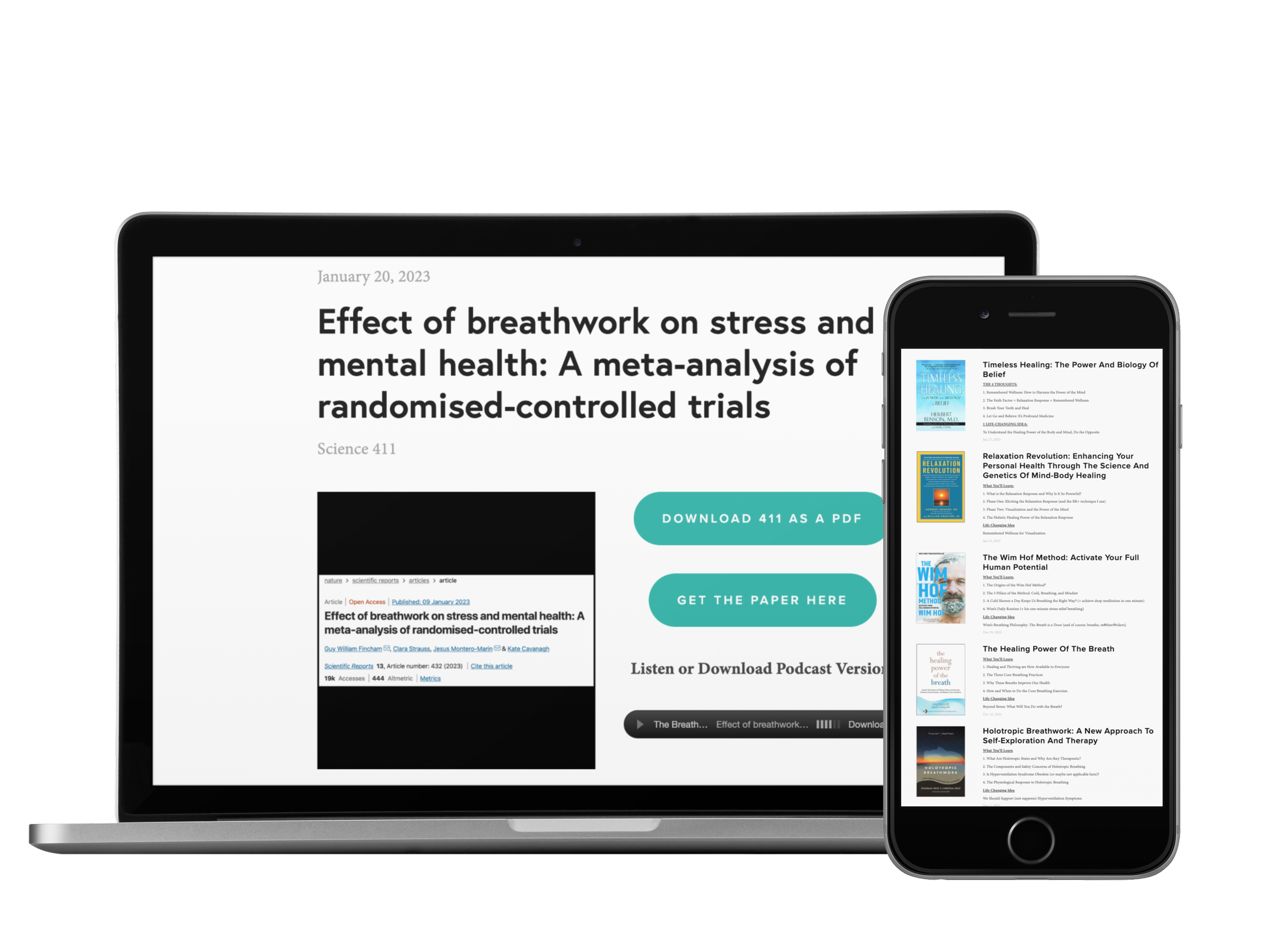Listen Instead of Reading
If you enjoy listening, you can subscribe to the audio version on Spotify, Apple Podcasts, and Audible so you don’t even have to look at the email 😊
4 THOUGHTS
1. The “Embreathment” Illusion
“This new way of inducing a respiratory bodily illusion, called “embreathment,” revealed that breathing is almost as important as visual appearance for inducing body ownership and more important than any other cue for body agency.”
This was such an awesome, fun-to-read study (and “embreathment” is possibly the coolest thing I’ve seen in a science paper).
They used virtual reality to assess how important breathing is for “corporeal awareness,” the feeling that we own a body, we have agency over that body, and that body occupies a location in space.
As the above quote illustrates, they found that, even without conscious awareness, breathing helps us feel more body ownership and, most significantly, a sense of body agency. Pretty crazy.
Those are the most important things, but this one had tons of other neat and practical results. If you’re interested, consider signing up for the Learning Center to get the full Science 411.
2. Endlessly Ending. Endlessly Renewed
“One of the most remarkable facts of existence is under our noses all of the time. This is the Now of the present moment: endlessly ending, and endlessly renewed. Radically transient, yet always enduring.”
– Rick Hanson, Ph.D., Neurodharma
“Endlessly ending, and endlessly renewed. Radically transient, yet always enduring.”…just like each breath.
I suppose this is why humanity has always regarded breathing as our gateway to presence…because it is presence : )
3. A Thought & Action on Breathing for Better Emotional Health
Thought
We cannot control our emotions with our thoughts (at least, I’ve never been able to). We can, however, regulate them with our actions. And breathing is the most accessible action we can perform anytime to help manage our emotions.
(Related Quote: “The finding that we can change how we feel by using our breath is revolutionary.” - Emma Seppälä, Ph.D.)
Action
Stop and notice where you feel breath sensations in your body, in whatever position you are currently occupying. Note how observing the breath naturally slows it down. Do this for 1-3 breaths, and notice how much better your mind and body feel after.
This is always available to you.
4. Five Instagram Accounts I Love
Here are 5 IG accounts I genuinely enjoy, in no particular order (there are many more, but these were the first to come to mind).
HHPF: Best account for breathing studies.
abc.breathworkforkids: One of the coolest accounts out there if you have kids or work with them.
jaozolins: Brings life-changing wisdom to life with elegant yet simple designs (I could look at these posts all day).
op_e__n: Beautiful designs, lots of breathing posts, and inspiring quotes.
still.life: Awesome designs and inspirational content.
Become the Bruce Lee of Breathing
Learn & integrate different methods, philosophies, and approaches to breathing for better mental and physical health.
$14.99/month or $149/year
1 Quote
“Wherever you go, the breath is with you, providing an anchor. At moments that are right for you, you can turn to it just as you might turn to a good friend, to help you stay alert and cut down on the mind’s habitual, unnecessary thinking that often squanders so much energy.””
1 Answer
Category: Aquatic Mammal Breathing
Answer: Dolphins can exhale air up to this fast.
…
(Cue the Jeopardy! music.)
…
Question: What is 100 mph?
In good breath,
Nick Heath, T1D, PhD
“Breathing is the compound interest of health & wellness.”
* An asterisk by a quote indicates that I listened to this book on Audible. Therefore, the quotation might not be correct, but is my best attempt at reproducing the punctuation based on the narrator’s pace, tone, and pauses.
Sign Up For The Breathing 411
Each Monday, I curate and synthesize information from scientific journals, books, articles, and podcasts to share 4 thoughts, 1 quote, and 1 answer (like "Jeopardy!") related to breathing. It’s a fun way to learn something new each week.



